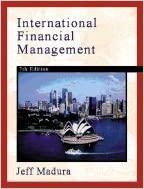Answered step by step
Verified Expert Solution
Question
1 Approved Answer
Instructions: Fill in the cells with $ (yellow highlighted) and the ratios will automatically calculate Financial Ratios Analysis Current Year Previous Year Previous Year Liquidity
| Instructions: Fill in the cells with $ (yellow highlighted) and the ratios will automatically calculate | ||||
| Financial Ratios Analysis | Current Year | Previous Year | Previous Year | |
| Liquidity Ratios | ||||
| Current Ratio: Current Assets/Current Liabilites | - | - | extent to which a firm can meet short-term obligations - generally one wants an upward trend | |
| Quick Ratios: Current assets minus inventory/current liabilities | - | - | extent to which a firm can meet short-term obligations w/o selling inventory - generally one wants an upward trent | |
| $ Current Assets | ||||
| $ Current Liabilites | ||||
| $ Inventory | $- | |||
| Leverage Ratios | ||||
| Debt-to-Total Assets Ratio: Total Debt/Total Assets | - | - | - | % of total funds provided by creditors - generally one wants a downward trend |
| Debt-to-Equity Ratios: Total Debt/Total Stockholders' Equity | - | - | - | % of total funds provided by creditors vrs. by owners - generally one wants a downward trend |
| Times-Interest-Earned Ratio: Profits before interest & taxes/Total Interest Charges | - | - | - | extent to which earnings can decline w/o firm being unable to pay interest - generally one wants and upward trend |
| $ Total Debt | ||||
| $ Total Assets | ||||
| $ Total Stockholders' Equity | ||||
| $ Profits before Interest and taxes | ||||
| $ Total Interest Expense | ||||
| Activity Ratios | ||||
| Inventory Turnover: Sales/Inventory of Finished Goods | - | - | - | whether firm holds extensive inventory and is selling it slower than industry - generally one wants and upward trend |
| Fixed Assets Turnover: Sales/Fixed Assets | - | - | - | Sales productivity and plan and equipment utilization - generally one want to see an upward trend |
| Total Assets Turnover: Sales/Total Assets | - | - | - | whether firm is generating sufficient vol. of busin. for size of asset investment - generally one wants an upward trend |
| Average Collection Period: Accounts Receivable/(Total credit sales/365 days) | - | - | - | average time it takes for firm to collect on credit sales - generally one wants a downward trend |
| $ Sales | ||||
| $ Inventory of Finished Goods | ||||
| $ Fixed Assets | ||||
| $ Total Assets | ||||
| $ Accounts Receivable | ||||
| $ Total Credit Sales (uless othewise indicated, same as sales) | ||||
| Profitability Ratios | ||||
| Gross Profit Margin: Sales minus cost of good sold/Sales | - | - | - | total margin available to cover operating expenses and yield a profit - generally one wants an upward trend |
| Operating Profit Margin: Earnings before interest and taxes (EBIT)/Sales | - | - | - | profitability w/o concern for taxes and interest - generally one wants and upward trend |
| Net Profit Margin: Net Income/Sales | - | - | - | after-tax profits per dollar of sales - generally one wants an upward trend |
| Return on Total Assets (ROA): Net income/Total Assets | - | - | - | after-tax profits per dollar of assets (ROI) - generally one wants and upward trend |
| Return on Stockholders' Equity (ROE): Net Income/ Total Stockholders' Equity | - | - | - | after-tax profits per dollar of stockholders' investment in the firm - generally one wants and upward trend |
| Sales Revenue (already entered above - no need to re-enter data) | - | - | - | |
| $ Cost of goods sold or cost of sales | ||||
| $ EBIT (Earnings Before Interest and Taxes) | ||||
| $ Net Income (Earnings After Interest and Taxes) | ||||
| Total Assets (already entered above - no need to re-enter data) | - | - | - | |
| Total Stockholders' Equity (already entered above - no need to re-enter) | - | - | - | |
| $ Other Operating Expenses | ||||
| Revenue/Expense | ||||
| Sales Revenue (percentage change) | - | - | - | annual percentage growth rate in sales - generally one wants an upward trend |
| Cost of Sales (percentage change) | - | - | - | annual percentage growth rate in cost of sales - generally one wants a downward trend |
| Operating Profit (percentage change) | - | - | - | annual percentage growth rate in operating profit - generally one wants an upward trend |
| Net Income (percentage change) | - | - | - | annual percentage growth rate in net income - generally one wants an upward trend |
ebay case study 14
Step by Step Solution
There are 3 Steps involved in it
Step: 1

Get Instant Access to Expert-Tailored Solutions
See step-by-step solutions with expert insights and AI powered tools for academic success
Step: 2

Step: 3

Ace Your Homework with AI
Get the answers you need in no time with our AI-driven, step-by-step assistance
Get Started


